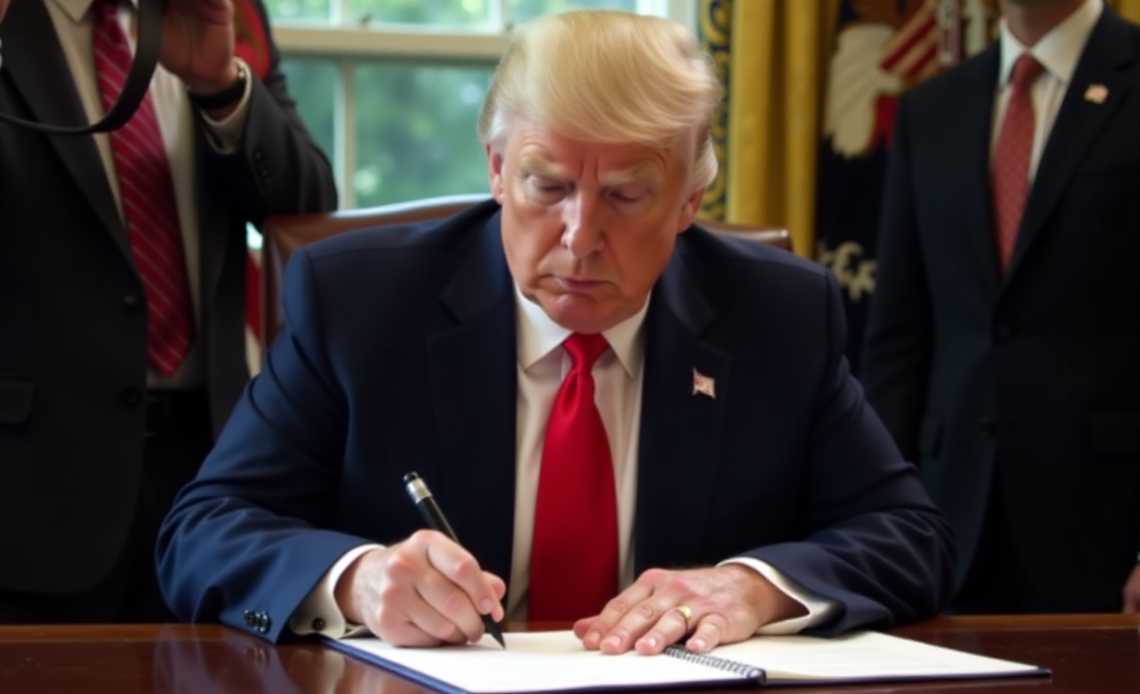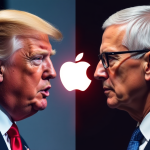On Thursday, US President Donald Trump implemented increased tariff rates, ranging from 10% to 50%, affecting numerous trading partners.
This move is a trial of his approach to reduce US trade deficits, aiming to do so without significantly disrupting global supply chains, increasing inflation, or provoking strong retaliatory actions from other nations.
After weeks of anticipation regarding Trump’s definitive tariff rates and intense negotiations with key trading partners aiming to reduce them, the US Customs and Border Protection agency commenced collecting the increased tariffs at 12:01 a.m. EDT (0401 GMT), according to a Reuters report.
A notice issued this week by US Customs and Border Protection (CBP) informs shippers that goods loaded onto US-bound vessels and in transit before the midnight deadline will be eligible for lower, pre-existing tariff rates until October 5, according to the report.
This follows a previous pause by Trump on higher rates announced in early April, which had subjected imports from many countries to a baseline 10% import duty.
Trump’s tariff strategy
Trump has repeatedly adjusted his tariff strategy, imposing significantly higher rates on certain countries.
This includes tariffs of 50% on Brazilian goods, 39% on Swiss goods, 35% on Canadian goods, and 25% on Indian goods.
On Wednesday, he also declared a separate 25% tariff on Indian products, effective in 21 days, due to India’s acquisition of Russian oil.
Before the deadline, Trump praised the influx of “billions of dollars” into the US, primarily from nations he claimed had exploited the United States.
Trump said on Truth Social:
THE ONLY THING THAT CAN STOP AMERICA’S GREATNESS WOULD BE A RADICAL LEFT COURT THAT WANTS TO SEE OUR COUNTRY FAIL!
Framework agreements have been reached with eight major US trading partners, including the European Union, Japan, and South Korea.
These agreements, made with the Trump administration, cover trade and investment concessions, leading to a reduction in their base tariff rates to 15%.
These partners collectively represent approximately 40% of US trade flows.
A 10% rate was secured by Britain, while Vietnam, Indonesia, Pakistan, and the Philippines achieved rate reductions to either 19% or 20%.
“For those countries, it’s less bad news,” William Reinsch, a senior fellow and trade expert at the Center for Strategic and International Studies in Washington, was quoted in the report.
Specifics not clear
Reinsch said:
There’ll be some supply chain rearrangement. There’ll be a new equilibrium. Prices here will go up, but it’ll take a while for that to show up in a major way.
He further noted that countries with exceptionally high duties, such as India and Canada, “will continue to struggle to resolve this issue.”
Trump’s administration has yet to provide specifics on how it will identify or enforce its order to impose an additional 40% import duty on goods determined to be transshipped from a third country to evade higher US tariffs.
On July 31, Trump’s tariff order introduced import taxes exceeding 10% for 67 trading partners, while other nations maintained a 10% rate.
This action is part of a broader, multi-pronged tariff approach that includes national security-focused sectoral tariffs on various goods such as semiconductors, pharmaceuticals, automobiles, steel, aluminum, copper, and lumber.
Trump indicated on Wednesday that duties on microchips could potentially reach 100%.
China’s tariffs may increase on August 12 if Trump does not extend the truce agreed upon last week in Sweden.
Additionally, Trump has indicated he might impose more tariffs on China due to its acquisition of Russian oil. This move is aimed at pressuring Moscow to conclude the conflict in Ukraine.
Price hikes
Trump has highlighted the significant rise in federal revenues resulting from his import tariffs, which are ultimately borne by importing companies and end-product consumers.
US Treasury Secretary Scott Bessent estimates annual US tariff revenues could exceed $300 billion.
The Atlantic Institute estimates that average US tariff rates will rise to approximately 20% due to this action, marking the highest level in a century.
This is a significant increase from the 2.5% rate observed when Trump assumed office in January.
Last week, Commerce Department data indicated that US prices, including those for home furnishings, durable household equipment, recreational goods, and motor vehicles, began to rise in June due to tariffs.
Global corporations, including industry leaders such as Caterpillar, Marriott, Molson Coors, and Yum Brands, are experiencing increasing financial burdens due to Trump’s tariff policies.
According to Reuters’ global tariff tracker, the cumulative profit loss for companies that have reported earnings this quarter is projected to be approximately $15 billion in 2025.
The post US tariffs spark price hikes and supply chain concerns appeared first on Invezz







